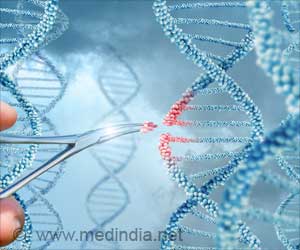Researchers at the University of California-San Francisco (UCSF) have successfully used tiny molecules called microRNAs to help turn adult mouse cells back to their embryonic state.
Stem cell therapies of the future could become far safer following a path-breaking effort by researchers at the University of California-San Francisco (UCSF).
The new technique eliminates cancer and other risks involved in the current DNA-based methods.The varsity scientists have successfully used tiny molecules called microRNAs to help turn adult mouse cells back to their embryonic state. That is, the reprogrammed cells have the capacity to become any cell type in the body.
"Using small molecules such as microRNAs to manipulate cells will play a major role in the future of stem cell biology," Nature magazine quoted senior author Dr. Robert Blelloch, of the Eli and Edythe Broad Center for Regeneration Medicine and Stem Cell Research at UCSF, as saying.
During the study, the researchers used a combination of microRNAs and retrovirus-introduced genes to transform fibroblast cells, found throughout the body of mice and humans, into pluripotent cells.
Previous methods for creating embryonic stem cell-like cells have relied on the introduction of DNA that encodes four proteins that play a role in the production of genes. The limitation of that method is that three of the four genes that code for these transcription factors - oct4, klf4 and c-myc - are oncogenes that promote the uncontrolled cell growth, which is characteristic of cancer.
In the current study, graduate student Robert Judson and his colleagues induced pluripotency using a combination of infection and transfection.
Advertisement
The researchers labelled the fibroblast cells, and found that the treated cells could be incorporated into a mouse embryo and become every cell type in the adult animal -- including germline cells that would produce the next generation of mice.
Advertisement
"MicroRNAs give us a new tool to manipulate the fate of cells," Blelloch adds.
Blelloch's team are presently working to replace all four transcription factors with microRNAs and conducting experiments that will reveal the mechanism by which these small molecules are able to induce pluripotency.
The researchers will also be looking to determine which microRNAs might be able to turn adult cells directly into particular adult cell types, by-passing the embryonic stem cell-like stage altogether.
"The goal now is to ensure the safety of induced pluripotent stem cells and to differentiate them into cells that can be used to repair damaged tissue and treat disease," he says.
The study has been published in the journal Nature Biotechnology.
Source-ANI
GPL








